Division Pteridophyta Scientific name Phlebodium aureum Rank Species | ||
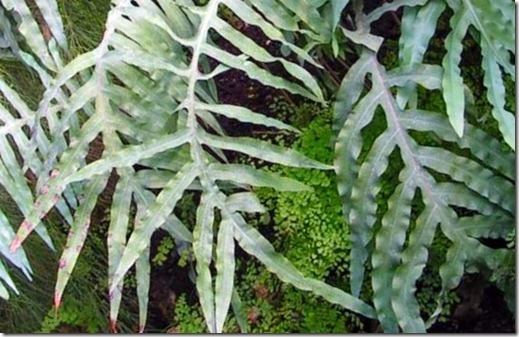 | ||
Similar Phlebodium, Polypodium, Davallia, Polypodiaceae, Davallia fejeensis | ||
Time lapse photography circinate vernation phlebodium aureum l j sm
Phlebodium aureum (golden polypody, golden serpent fern, cabbage palm fern, gold-foot fern, hare-foot fern; syn. Polypodium aureum, Polypodium leucatomos) is an epiphytic fern native to tropical and subtropical regions of the Americas. It is confined to the eastern side of the continents, extending north into the United States to Florida and the extreme southeast of Georgia, and south through the Caribbean (the Bahamas, Puerto Rico, and Lesser Antilles), and northern and eastern South America to Paraguay. It is the only species of Phlebodium found in North America, the other species all confined to South America. Other common names include calaguala (Spanish language), laua`e haole (Hawaiian), samambaia (Portuguese), and hartassbräken (Swedish).
Contents
- Time lapse photography circinate vernation phlebodium aureum l j sm
- Habitat
- Cultivation and uses
- Systematics
- References

It is a rhizomatous fern, with the creeping rhizome 8–15 mm (rarely 30 mm) in diameter, densely covered in the golden-brown scales that give the species its name. The fronds are large and pinnatifid (deeply lobed), from 30–130 cm long and 10–50 cm broad, with up to 35 pinnae; they vary in color from bright green to glaucous green and have undulate margins. Several round sori run along each side of the pinna midrib, and the minute spores are wind-dispersed. The fronds are evergreen in areas with year-round rainfall, semi-evergreen or briefly deciduous in areas with a marked dry season.
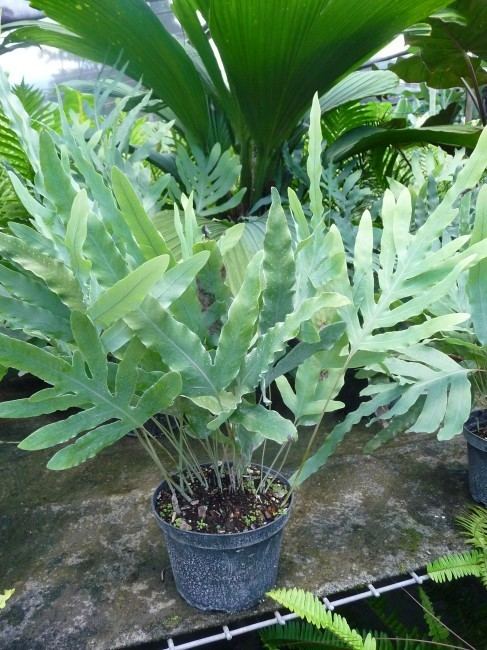
Habitat
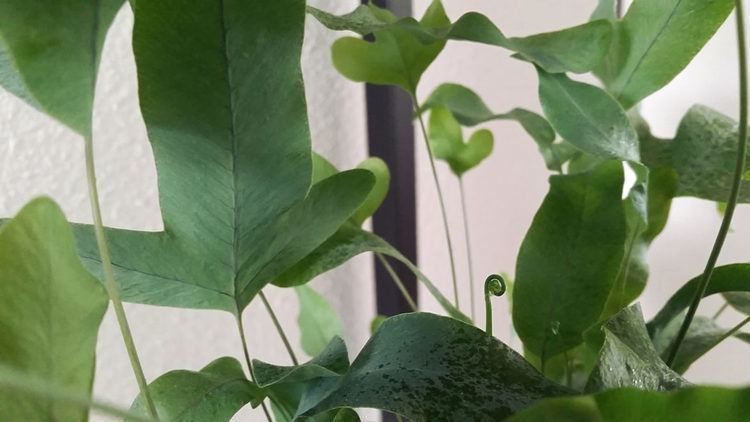
This fern is rarely terrestrial in habitat, usually colonizing the canopies of tropical rainforests and the dwarf palms of subtropical forests. It is common in the cloud forests of the Caribbean and northern South America. It grows in varied habitats in Florida, including swamps and hammocks, and can thus apparently tolerate a wide range of microclimates. Its restriction to the tropics and subtropics is readily explained by its intolerance of anything other than very brief, light frosts. High levels of light are also critical for growth of this species, and its deciduous habit allows it to invade relatively dry areas.
Cultivation and uses
Phlebodium aureum is well-adapted to cultivation and is valued both as an ornamental plant and in herbal medicine.
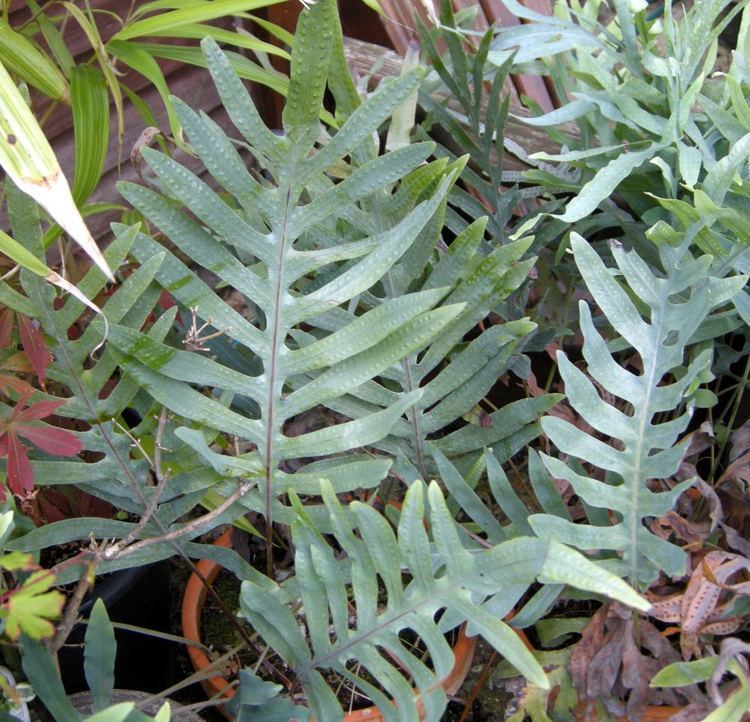
It can be cultivated in greenhouses in nontropical climates if night temperatures do not fall below about 5 °C. Several cultivars have been selected for garden planting, with varying leaf color from grey-green to silver-green to blue-green, or with cristate or very wavy frond margins.

Decoctions have been used as a panacea in Central American folk medicine. These tonics were prescribed for a multitude of ailments, ranging from asthma to heart disease. A close relative, Polypodium vulgare, was used historically in Europe up to the Renaissance to relieve coughing and treat mental illness. Its use as a tea for blood cleansing began with the Mayans, and continues today in Honduran culture. Orally administered extracts have been effective immunomodulators, antipsoriatics, neuroprotective agents, cough suppressants, and anti-inflammatories in laboratory studies. An extract may also protect skin from ultraviolet damage.
Systematics
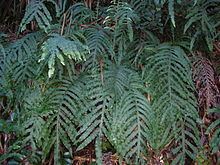
Phlebodium aureum is a member of a very small, and recently discovered genus. It was split from the Polypodium genus, and the split is still apparent in the multitude of Synonyms available for Phlebodium aureum. Phlebodium is one of the 178 genera in the Polypodiaceae family. Additionally, the Polypodiaceae family is broken into a number of a subfamilies, with Phlebodium a member of the non-grammatid tribe within the subfamily Polypodioideae. Members of the non-grammatids in this subfamily include the genera Polypodium, from which Phlebodium is derived from and most likely its closest relative. Other members include Pecluma, Pleopeltis, Microgramma, and Pleurosoriopsis. A bootstrapping technique proves that, at a 90% confidence level, the polypodiaceous ferns form a sister relationship with tree ferns. However, further phylogenetic studies need to be conducted regarding the current status of the genus, and which of the species are the most related.

The genus Phlebodium is exemplified by containing rows of areoles that lack included veins, and each sori served by two different veins. Correll and Correll, two authors responsible for thirty years of classification since Flora was introduced in 1982, documented Phlebodium aureum as Polypodium aureum as recently as 1982. However, this creation of the new genera is warranted based on some notable differences. For instance, Giudice et al. points out that the sori on Phlebodium are more smooth and rounded when compared to other groups within the Polypodiaceae family. Additionally, studies on spores and size of the mature plant prove that Phlebodium contrasts severely from the rest of its family, providing the creation of the genera. The division of genera within the Polypodiaceae is fairly gray, considering that systematically, gametophytes differ only very slightly amongst different genera.
It is important to note, that the members of the Polypodiaceae family are closest related to the Davalliaceae, with further relationships noted to Oleandraceae, Tectariaceae, and the Lomariopsidaceae within the order Polypodiales, which contains 80% of today’s ferns species (see additional page for picture). The order arose and diversified about 100 million years ago, and are regarded as one of the most evolutionarily advanced orders of ferns.
